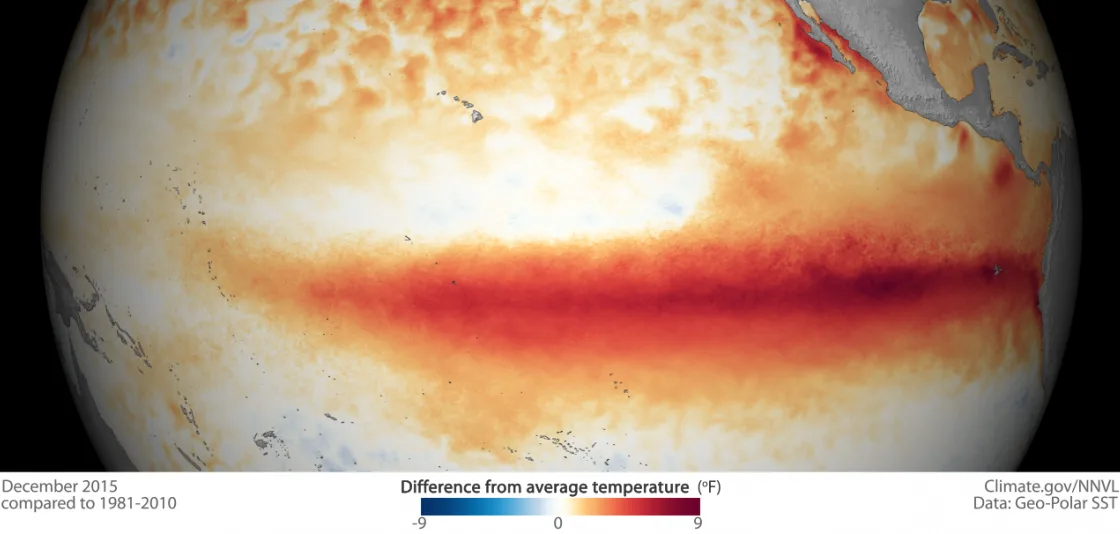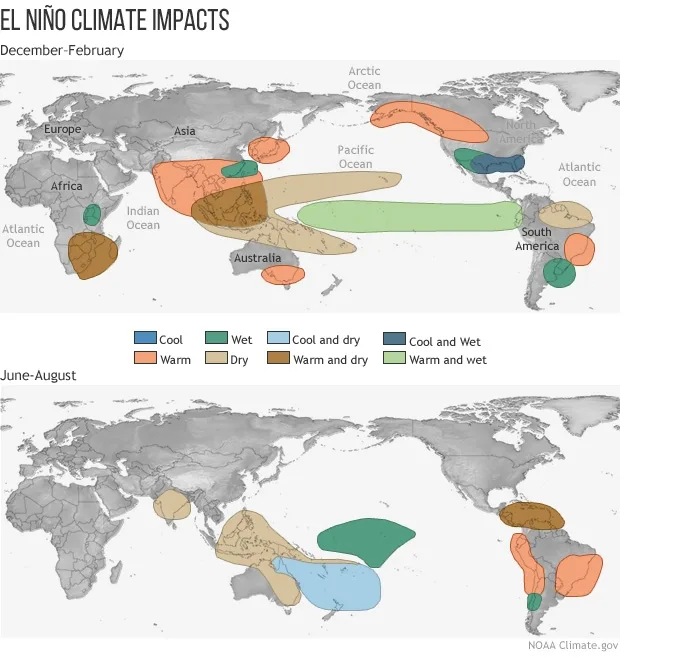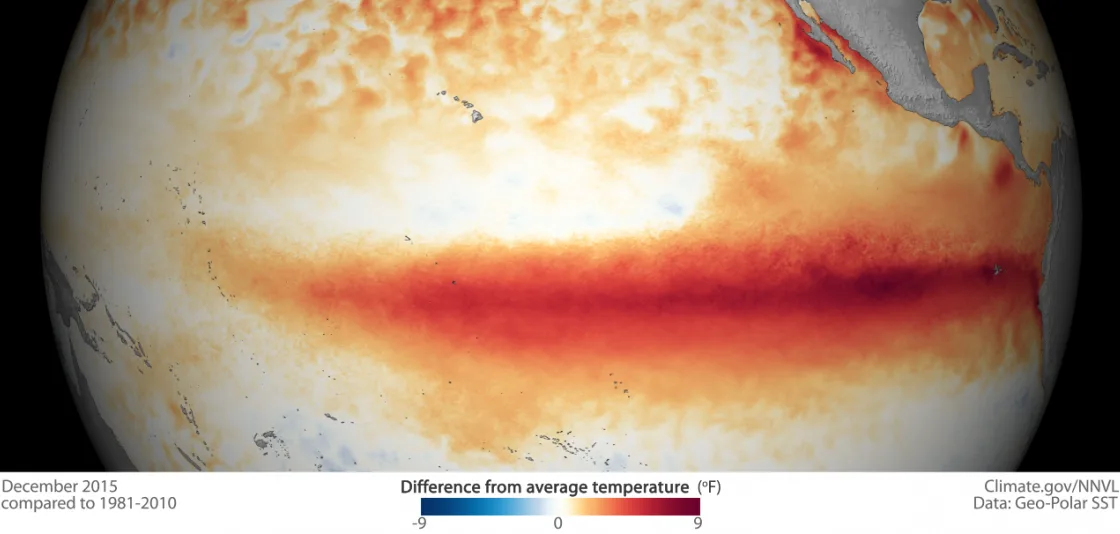
Super El Niño events may become more frequent with climate change, says study
El Niño events have the ability to impact the weather in many regions of Canada
A new study finds that amplified versions of El Niño, known as a Super El Niño, could occur more frequently in the future due to human-induced climate change and the researchers warn that this could have “profound socioeconomic consequences.”
Worldwide weather patterns are altered by El Niño events because they cause a periodic warming of ocean waters in the central and east-central equatorial Pacific and shifts in the trade winds, which add tremendous amounts of heat to the ocean's surface and atmosphere.
El Niño events have global impacts, such as the devastating 1998 ice storm in parts of Ontario and Quebec that left millions without power and caused billions of dollars in damages. The impacts can be felt from North America to Asia, Africa and Australia. In the United States, one of the main anomaly signals is the increase of precipitation across a large swath of the south, extending from California to Florida.

The global impacts of El Niño. Credit: NOAA
The results from the study of 33 El Niño years registered between 1901 and 2017 show that significant changes in the structure and frequency of these events have occurred.
The use of statistical methods, eight different computer models, and analysis of ocean anomaly patterns helped the research team conclude that the warm western tropical Pacific waters will become warmer more frequently in the coming decades.
One of the main changes is that the locations where El Nino events originate and reach peak intensity have shifted westward since the 1970s. Researchers have also concluded that there is an increase in the odds of extremely strong El Niño events occurring.
The new configuration of warmer than usual equatorial waters is one where El Niño is now more commonly forming in a region of the Pacific Ocean that is naturally warmer. This means that the anomalous heat that shows up during these warm episodes added to the usually warm waters increases the chances of an El Niño becoming a strong one.

An image of warmer than usual sea surface temperatures that are related to an El Niño event. Credit: NOAA
Human-induced climate change appears to be behind this uneven warming of the waters in the Central Pacific and is also influencing the regional trade winds, which then blow stronger from cooler to warmer waters.
Lead author Bin Wang finds that there are significant differences between the Western Pacific and eastern Pacific El Niño events. One difference is that the western-based events can begin to affect global weather patterns during the summer in the Northern Hemisphere, rather than reserving the most significant impacts for the winter months. This type of El Niño set-up can have a greater impact on long-lasting patterns like heat waves or droughts in countries such as the United States.
The future change of El Niño events will depend on the temperature change in the Western Pacific relative to the Central Pacific. If the western waters heat-up faster than the central ones, it will cause more El Niño events to be centred further west. This change would be the equivalent of having more Super El Niño events occurring in the future and will result in a global impact on weather and climate.

